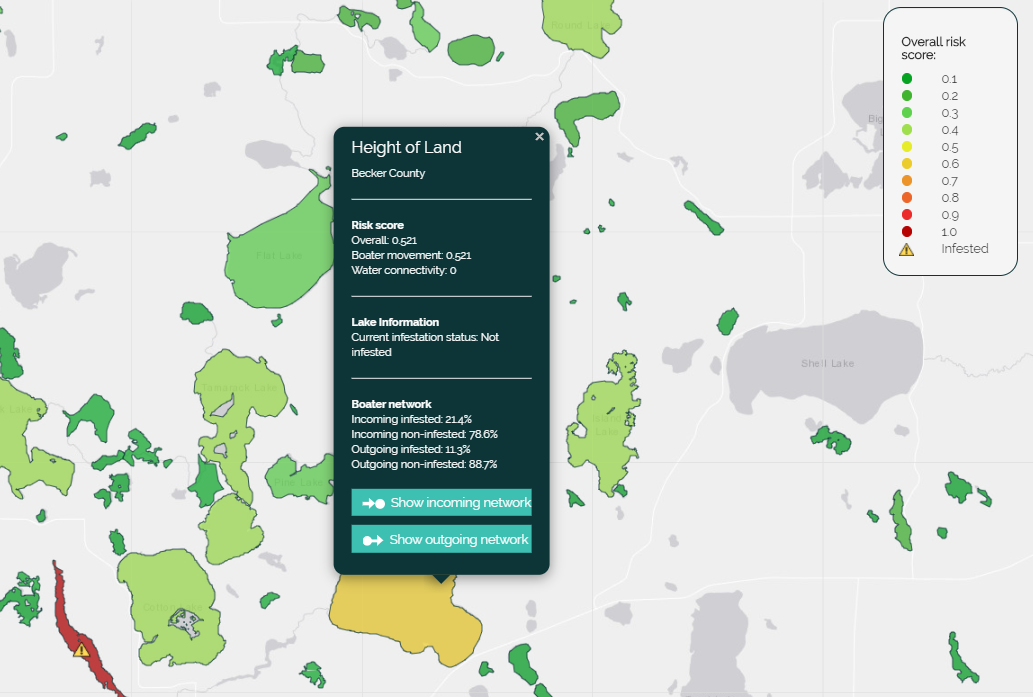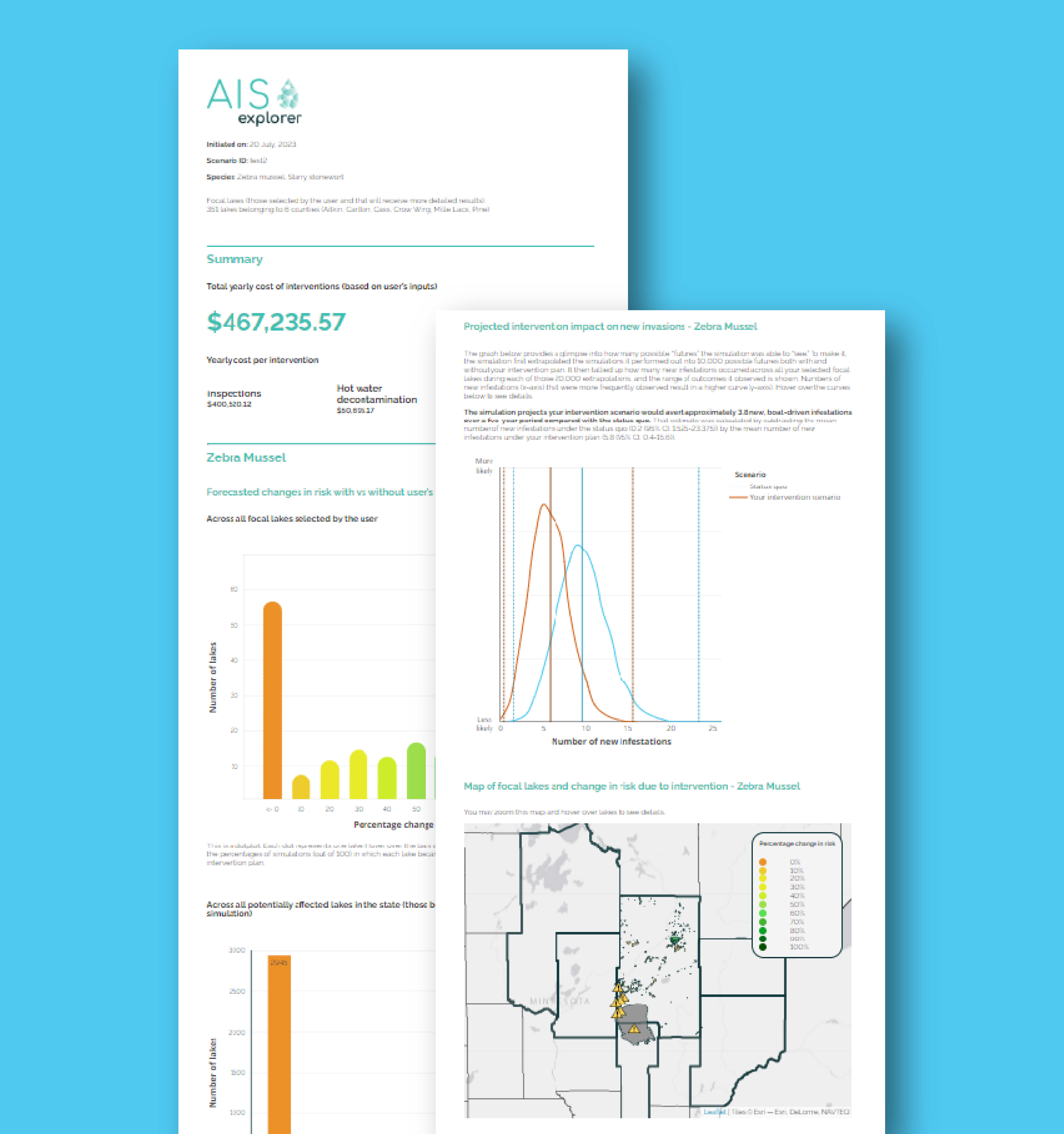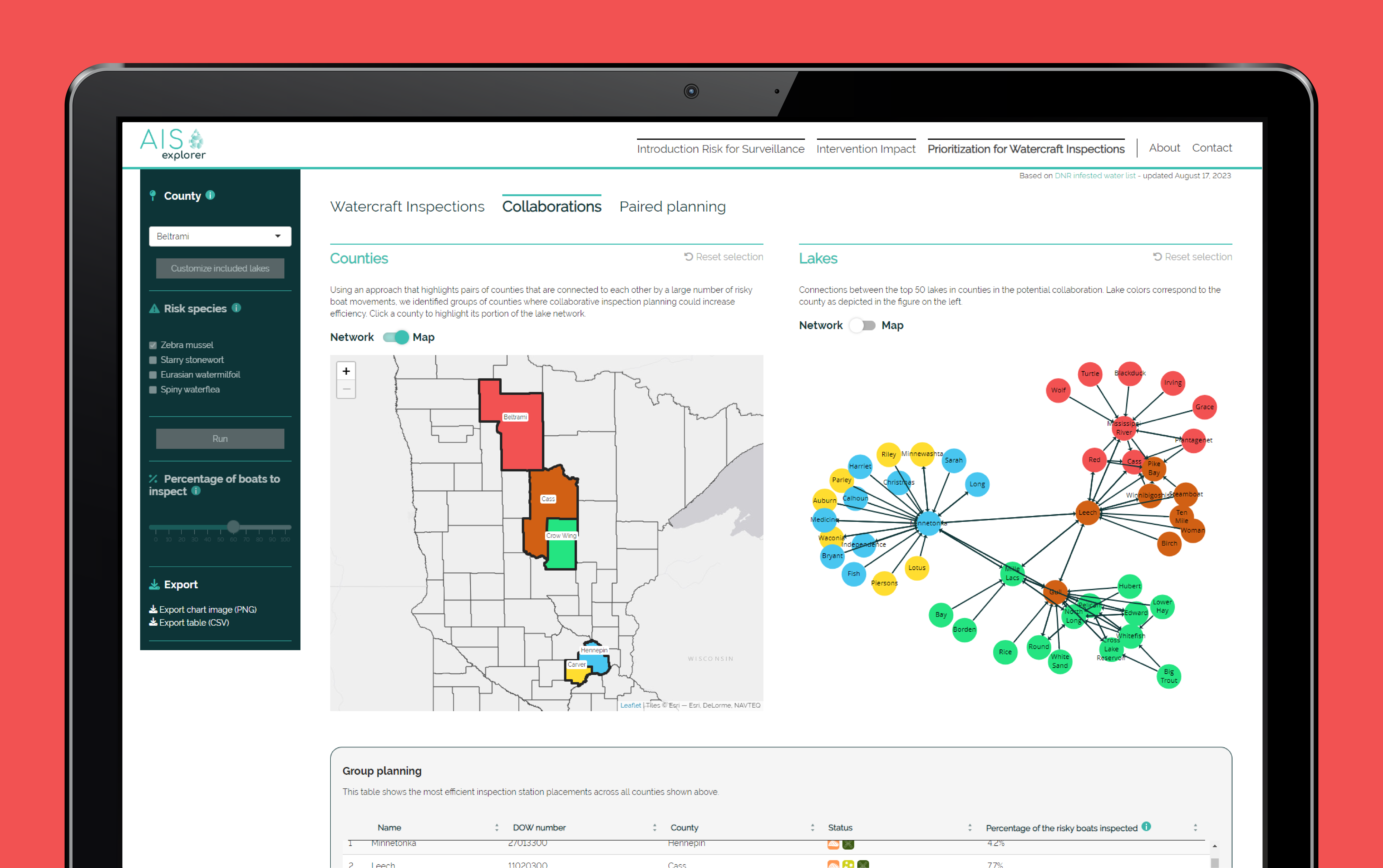Science-supported biosecurity decision making
Aquatic invasive species (AIS) managers are tasked with preventing the spread of many AIS moving through a highly complex and interconnected waterways system, often with limited resources to do so. A data-driven approach to identify and prioritise waterbodies of high risk of invasion is needed to help inform effective and efficient control programs.
Built for stakeholders
The AIS Explorer brings together a series of complex models into a decision support tool, which is in active use by county managers and decision makers across Minnesota. The models are connected through a user-friendly interface and maintained in the cloud to ensure consistent access.
Lake status is regularly updated through an automated data pipeline to ensure latest data and risk estimates are easily accessible. This allows smart use of data for rapid detection and response to biosecurity threats in a practical and cost-effective way.

Connecting cutting edge research with everyday decisions
This project showcases how quantitative risk modelling, implemented in specialist software, can be directly linked with operational decision-making in biosecurity, and connect field work conducted by regional authorities with cutting edge science in a timely manner. The AIS Explorer supports stakeholder engagement and smart use of data for rapid detection and response to biosecurity threats in a practical and cost-effective way.

Evaluate the impact of interventions
Assess the impact of different intervention scenarios on the risk of new infestations. With each scenario, users can select different levels of effort, effectiveness, and cost; enabling users to evaluate the outcomes of different intervention plans within the aquatic ecosystems.

Enabling collaboration
Users are empowered to investigate the connections between lakes in different counties, where collaborative inspection planning could increase intervention efficiency. This helps decision makers place watercraft inspection stations where the impact is the highest.

Information for action
During inspections, survey data about the location of boating activities is collected. This has been used to develop boater movement networks across all waterbodies. The power of these networks has been harnessed through the development of county-level watercraft inspection plans that outline the optimal location of watercraft inspections for “risky” movements (leaving infested waterbody, arriving at uninfested waterbody) for each county.
Using AIS Explorer resource managers, who are responsible for thousands of waterways, can optimise their limited resource by accessing science-based recommendations on which lakes inspectors should be placed at for the best effect. Ranked inspection lists can be generated for zebra mussels, starry stonewort, Eurasian watermilfoil, spiny water flea and any combination thereof.
Resources
View and download a PDF handout for the AIS Explorer
Watch a webinar about the AIS Explorer, led by Prof Nick Phelps from the University of Minnesota
Conferences
Snellgrove N, Muellner U. Using R, Python, and Cloud Infrastructure to Battle Aquatic Invasive Species. Posit::conf, Chicago, U.S., September 2023.
Kinsley AC, Haight R., Snellgrove N, Muellner P, Muellner U, Duhr M, Phelps NDB. Improving the efficiency of aquatic invasive species prevention: an interdisciplinary approach. North American Invasive Species Management Association, 2021.
Kinsley A, Muellner P, Snellgrove N, Muellner U, Phelps N. Using complex models to support every-day biosecurity decisions for aquatic invasive species. Poster Session, One Health Aotearoa (OHA) Symposium, New Zealand, 2020.
View the conference presentation poster
Publications
Kinsley A, Kao S-Y Z, Enns E A, Escobar L E, Qiao H, Snellgrove N, Muellner U, Muellner P, Muthukrishnan R, Craft M E, Larkin D J, Phelps N B D. Modeling the risk of aquatic species invasion spread through boater movements and river connections. Conservation Biology, e14260. doi: 10.1111/cobi.14260, 2024.
Available here
Kinsley A, Haight R, Snellgrove N, Muellner P, Muellner U, Duhr M, Phelps N. AIS explorer: Prioritization for watercraft inspections-A decision-support tool for aquatic invasive species management. Journal of Environmental Management, 314 doi: 10.1016/j.jenvman.2022.115037, 2022.
Available here


